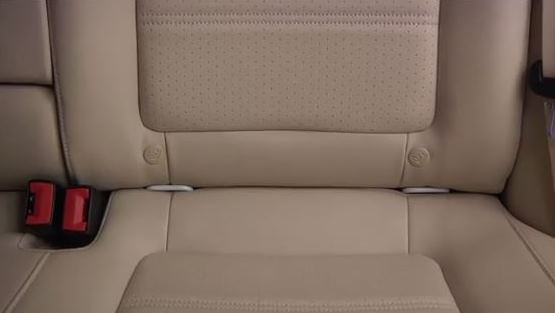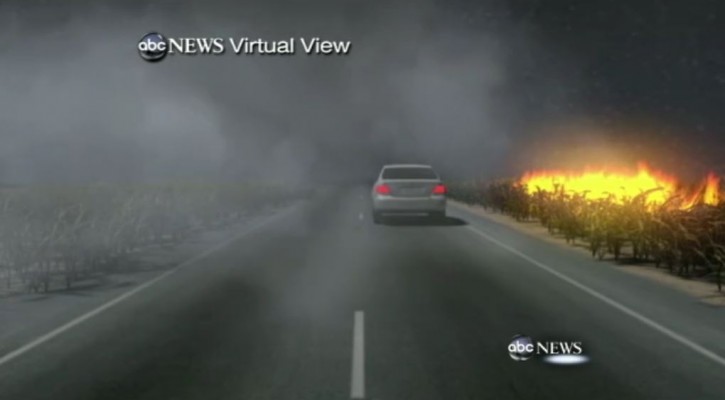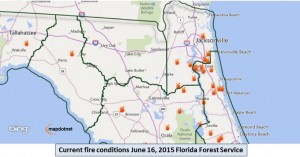Tag Archive: Driving Safety

Rural Roads More Dangerous Than Urban Roads
July 31, 2015
When thinking of rural or country areas, most people imagine a laid back, slower lifestyle but, while that stereotype might work for the local country diner, it doesn’t hold true for rural roads. The latest data is out from the National Highway Transportation Safety Administration (NHTSA) for the 2013 calendar year and it shows that, just like in years past, more people die in in motor vehicle crashes in rural areas than urban areas.
While most people may think that interstate highways are the most dangerous type of road, it’s actually rural roads where the majority of fatal crashes happen.
|
Type of road |
Number of fatal crashes |
Number of deaths |
|
Urban |
14,026 |
14,987 |
|
Rural |
15,998 |
17,696 |
According to the 2013 American Community Survey from the U.S. Census Bureau, an estimated 19 percent of the U.S. population lived in rural areas. However, rural fatalities accounted for 54 percent of all traffic fatalities in 2013.
Why so many deaths in such sparsely populated areas? There are several factors that contribute to the high death toll on rural roads:
Roads
Most rural roads are generally two-lane, narrow roads. In the east and far west, they tend to be hilly, winding roads with narrow shoulders that limit a driver’s view ahead and give the driver very limited room to escape in case of a hazard on the road.
Speed
The combination of those hilly, winding roads and high speed can be deadly. Thirty percent of those killed in rural crashes were speeding at the time of the crash. Speeding drivers may not be able to maintain control of the vehicle in a curve or stop in time if they encounter an object or other vehicle in the road. In rural fatal crashes, 69 percent of drivers involved were on roadways where the posted speed limit was 55 mph or higher.
Alcohol
Of all the alcohol involved fatal crashes in 2013, 54 percent occurred in rural areas.
Seat belts
Fifty-one percent of all rural passenger vehicle occupants who were killed in traffic crashes weren’t wearing a seat belt. The numbers go even higher depending on the type of vehicle driven;
- In light trucks, 60 percent of rural fatalities weren’t wearing a seat belt.
- In pickup trucks, 64 percent of rural fatalities weren’t wearing a seat belt.
- In SUV’s 58 percent of rural fatalities weren’t wearing a seat belt.
- Sixty-nine percent of rural passenger vehicle occupants killed in roll-over crashes weren’t wearing a seat belt.
When driving in rural areas, drivers should be aware that rural roads can be deadlier than urban interstates and they should gauge their speed by road conditions – not the speed limit and always wear a seat belt.
For more information, read: Traffic Safety Facts – Rural/Urban Comparison

Why Hands Free Phones Aren’t Safer For Drivers
July 28, 2015
Hands free phones aren’t any safer for drivers than hand held phones according to research from Carnegie Mellon University.
Cars are becoming more and more connected to the web with dashboard screens that essentially act as a built in smartphone with many of the features seen in a typical computer. Auto manufacturers say they’re providing what the customer wants but, while cars are being made safer in other areas, the addition of these web connected devices are creating the potential for even more distracted drivers on the road. The manufacturers are also pushing the idea that hands free phones and texting are safer than using handheld devices but the scientific evidence doesn’t back that up.
In 2008, the Carnegie Mellon Center for Cognitive Brain Imaging published a study that used brain imaging to see what actually goes on in the brain while a driver is engaged in a phone conversation.
To conduct the study, 29 volunteer subjects “drove” over a simulated driving course while inside an MRI brain scanner. The subjects had to maintain speed while steering along a winding course. For the first test, the test subjects drove the course without any interruptions. In the second test, the subjects had to drive the course while listening to and answering true or false questions.
While driving without interruptions, the area of the brain that showed the greatest activity was the area responsible for “spatial awareness”; the area of the brain most associated with the complex task of safely steering a car
When the subjects had to listen and answer questions while driving, the activity in the brain’s spatial awareness area was reduced by 37 percent and the area of the brain associated with language comprehension showed the greatest activity.
In spite of all the modern day hubbub about the ability to multitask, the results of the study convinced the researchers that the brain itself isn’t capable of multitasking. The brain has to ignore other demands in order to do one task effectively.
If someone is using a phone while driving, whether it be a handheld or hands free phone, the brain is concentrating on the content of the call, not on the task of driving. When activity in the area of the brain responsible for steering a car and watching the road is reduced, it can be easy to miss a potentially hazardous situation ahead and that can lead to tragedy.
Other, more recent studies have shown that voice activated phone and texting systems such as Apple’s Siri or Google’s voice activated search can be even more distracting than using a hand held phone because of the frustrations experienced when the system fails to understand your requests. Studies also show that the distractions of smartphone notifications, even when they aren’t answered, can lead to driving mistakes.
The best advice for drivers who want to complete their trip safely is to turn off the phone while driving and, if a call must be made, pull off of the road.
Read more: Carnegie Mellon Study Shows Just Listening To Cell Phones Significantly Impairs Drivers

Older Drivers Can Be Aided By Technology
July 17, 2015
When it comes to older drivers, stereotypes aren’t necessarily true. Years ago, safety experts predicted a traffic nightmare as baby boomers reached old age but that hasn’t turned out to be the case. In fact, traffic data from the Insurance Institute of Highway Safety shows that traffic deaths among drivers 70 and older have been on a steady decline since the high point in 1997.
There are fewer drivers over the age of 70 and they tend to drive fewer miles. Safety experts feel that many older drivers “self regulate”; that is they tend to restrict driving to less busy times of the day and they avoid driving at night. Another reason for the decline in deaths of older drivers is that older drivers tend to be healthier and have better medical care than drivers in the past.
It’s impossible to tell at what age a driver is too old to drive. It depends on the individual driver and everyone ages at a different rate. A new study published recently tracked 1000 people born in 1972-73. Using a range of biomarkers, they found that the biological age of the one-thousand 38 year olds ranged from 30 to 60 years apart. Some were aging rapidly while others aged very slowly.
Still, it’s undeniable that most people will reach an age when they’ll no longer be able to drive and many families will face the difficult decision of when to take away the keys.
However, for those drivers reaching their 70’s and still driving safely, technology has the answer to help them to continue to drive safely and, hopefully, reduce the fears that any family members may have. If they can afford it, a new car with the following features can help to keep them and any other driver, regardless of their age, safer on the road. While these packages may cost a bit more, their price may be offset by a reduction in insurance costs.
- Collision Avoidance – Collision avoidance technology uses a combination of either radar, lasers, and cameras to keep an eye on vehicles and pedestrians ahead. Those systems work together to warn a drivers if they’re approaching too closely to another vehicle or object. If the driver doesn’t heed the warnings, the system will apply the brakes and stop the car.
- Lane Departure Warning and Prevention – This system warns a driver if the vehicle is drifting out of the lane and uses the dynamic braking system to steer the car back into the lane if the driver doesn’t take action.
- Adaptive Headlights – This system turns the headlights in the direction of the wheels to illuminate the road more clearly on curves.
- Blind Spot Detection – This system uses sensors to detect other vehicles in a driver’s blind spot to warn a driver who’s about to move into another lane or who may be drifting over the line. These systems can either warn the driver or work together with the lane departure system to prevent a driver from moving over.
To find a list of vehicle manufacturers who offer these technologies, visit: Insurance Institute for Highway Safety – Crash avoidance features by make and model

IIHS Rates Child Safety Seat LATCH Mechanisms
June 25, 2015
The Insurance Institute for Highway Safety (IIHS) has come out with a rating list of child safety seat LATCH mechanisms. LATCH (Lower Anchors and Tethers for Children) systems, which have been required equipment on passenger vehicles since 2002, are supposed to make it easier for parents and caregivers to safely install child safety seats. In this first review of LATCH system ease of use, few cars made the grade.
LATCH systems consist of anchor points low on the seat and tether points on the back of the seat. Research shows that child seats installed with LATCH, rather than with vehicle seat belts, are more likely to be installed correctly. Whether or not parents use LATCH correctly depends on the attachment point’s visibility and ease of access.
According to an American Academy of Pediatrics study in 2014, 93 percent of new parents taking their newborn home from the hospital for the first time made at least one critical error in placing or attaching their infant car seat. LATCH systems are supposed to make that process easier but, according to the IIHS, most cars LATCH systems are difficult to find or are difficult to reach making it more difficult to attach car seats.
In conducting their study, the IIHS looked at five different criteria for a vehicle to receive a “good” rating:
- The lower anchors are no more than 3/4 inch deep in the seat bight.
- The lower anchors are easy to maneuver around. This is defined as having a clearance angle greater than 54 degrees.
- The force required to attach a standardized tool to the lower anchors is less than 40 pounds. (The tool represents a lower connector of a child seat, though the actual force required when installing a seat varies depending on the specific connector.)
- Tether anchors are on the vehicle’s rear deck or on the top 85 percent of the seatback. They shouldn’t be at the very bottom of the seatback, under the seat, on the ceiling or on the floor.
- The area where the tether anchor is found doesn’t have any other hardware that could be confused for the tether anchor. If other hardware is present, then the tether anchor must have a clear label located within 3 inches of it.
According to the IIHS, out of 102 models tested, only three models received a good rating; they are:
- BMW 5 series
- Mercedes-Benz GL-Class
- Volkswagen Passat
Out of the rest of the models tested, 44 were acceptable, 45 were marginal, and 10 were rated poor.
To read more and to view all of the models and their LATCH ease of use ratings, visit: IIHS launches ease-of-use ratings of LATCH hardware in vehicles
For information on choosing and installing the right car seat for your child, visit: Parents Central

Conditions Are Right For Super Fog
June 16, 2015
Conditions are right for the formation of super fog in Florida right now and that could make driving treacherous for Floridians.
Despite some recent scattered thunderstorms, North Florida is currently experiencing drought conditions and is considered the driest area in the state. The few recent thunderstorms in the area have built up quickly and then rapidly disappeared however, the lightning created by these storms can strike areas far from the rainfall. Those lightning strikes are causing wildfires and it appears that North Florida may be entering a significant fire season. Already, multiple wildfires have popped up throughout the region.
It’s bad enough when the smoke from these fires crosses over roadways. Heavy smoke can make driving conditions extremely hazardous but, when the smoke mixes with fog, conditions can rapidly turn deadly.
As we all know from our basic science classes, warm air holds a lot more moisture and, when humidity levels near 100 percent, fog can form; especially in the cooler, early morning hours. If the fog mixes with smoke from a wildfire, the water droplets in the fog can coat the smoke particles turning it into what’s known as a super fog. Super fog is much more dense and doesn’t dissipate as quickly as a normal fog.
Super fog has been responsible for some of the largest multi-vehicle crashes in the country.
Super fog caused a multi-vehicle crash on I-75 near Gainesville in January 2013 that killed 10 people and injured more than 20 others. Rescuers couldn’t see the victims but, instead, had to listen for screams and moans to reach the injured.
In January 2008, a super fog on I-4 near Lakeland, FL was responsible for a pileup involving 70 vehicles that killed four people and injured 38 others.
If you encounter thick smoke, fog, or a combination of the two, slow down and get off the road. Turning on your hazard lights may not do any good because the fog can be so thick, your lights won’t be visible to other drivers until it’s too late. Crack your window to listen for crashes ahead and, if possible, get off at the nearest exit.
See more: World News: Deadly Pileup

